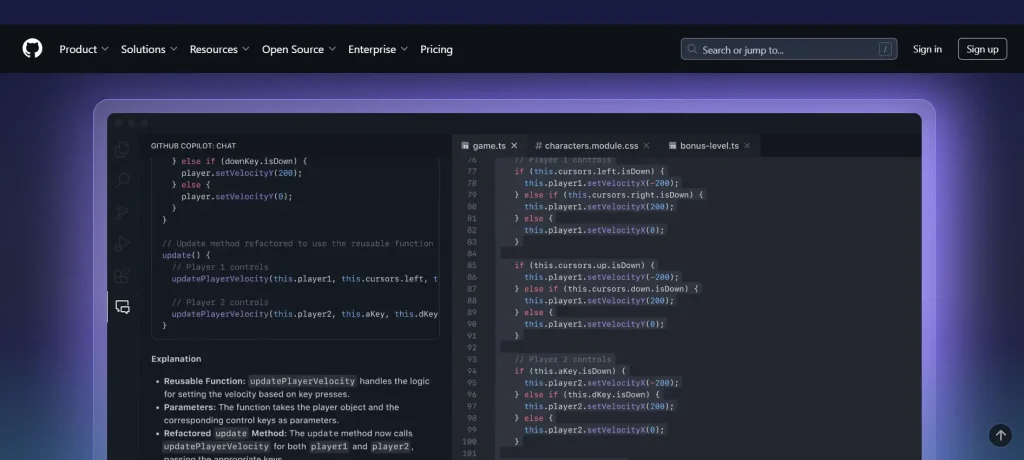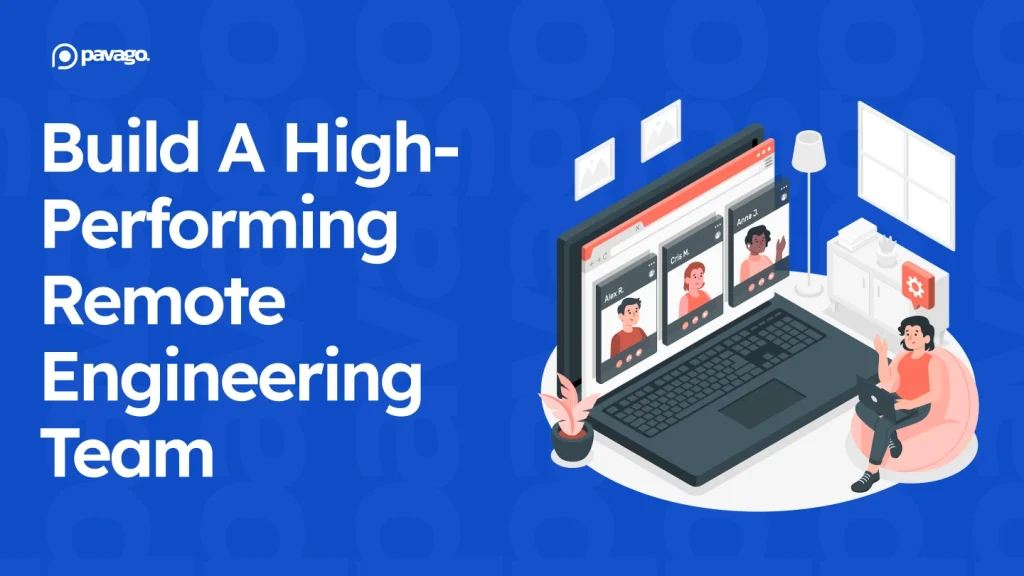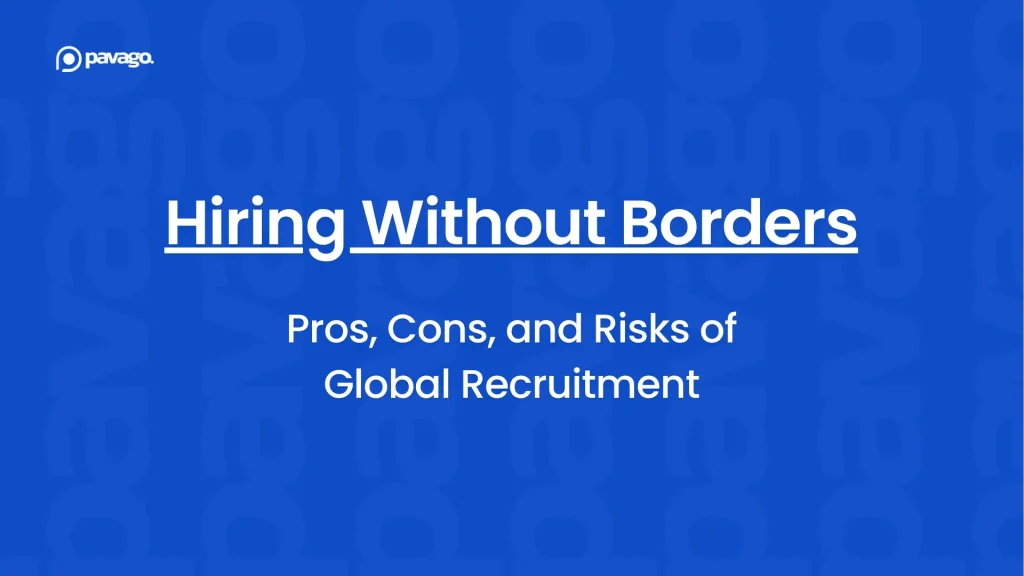Finding good engineers is tough right now. Everyone’s fighting over the same talent pool, and the best developers have figured out they can work from anywhere.
So you’re left with a choice: keep competing for overpriced local talent, or learn how to hire remotely without getting burned.
Here’s the thing, though: most companies mess up when they hire remote engineering teams because they treat it exactly like local hiring.
Spoiler alert: it’s not.
You need a different playbook, and that’s what we’re covering here. Whether you’re hiring your first remote dev or building out an entire offshore dedicated team, this guide will save you time, money, and a lot of headaches.
if you want to skip the hard parts entirely, Pavago has already done the heavy lifting by pre-vetting A-players from around the globe, so you can hire top talent faster, with confidence and zero guesswork.
First Things First: Get Clear on What You Actually Need
I’ve seen too many companies post job descriptions that read like they want a unicorn who knows every framework ever invented.
Stop doing that. You’re not impressing anyone – you’re just wasting everyone’s time.
List Down Your Technical Requirements
The first step to hire a remote development team is to create a simple list with three buckets: must-have, should-have, and nice-to-have. Then be brutally honest about what goes where.
If you’re building a React app, then yeah, React experience is non-negotiable. But does someone really need to know your exact state management library? Probably not if they’re solid with React.
Here’s the reality check: Good web developers can learn new tools. They can’t learn how to be good developers. Focus on the fundamentals and core technologies that actually matter to your product.
Also, when you list your tech stack, explain how you actually use these tools. There’s a huge difference between someone who’s built production microservices with Node.js versus someone who just used it for build scripts.
Decide on A Team Structure
Before you start reaching out to people, figure out if you need someone who can work independently or if you need a leader who can guide others. These are completely different interviews.
Also, decide on the full-time versus contractor thing upfront. Full-time people usually stick around longer and get more invested in your culture. Contractors can jump in quickly for specific projects. Both work, but they need different approaches.
And think beyond just filling today’s gap. Sometimes it’s worth hiring someone who can grow with you rather than someone who’s perfect for exactly what you need right now.

Where to Actually Find and Hire Remote Engineering Teams
Okay, so where do you find top-tier remote engineers?
Not on job boards where everyone else is fishing, that’s for sure.
1. Developer Communities
Developer communities are gold mines if you know how to use them. Places like Stack Overflow, Reddit’s programming communities, and specific Discord servers let you see how people actually think and communicate before you even message them.
GitHub basically has everything you need to gauge a developer’s skills. Look for consistent contribution patterns, clean code, and projects that actually solve real problems. A strong GitHub profile usually means someone who cares about their craft, and those are the people you want.
Also, your current team (if you have one) probably knows other good developers. Set up a referral program that rewards quality introductions, not just successful hires. Good developers hang out with other good developers.
2. Remote Hiring Agencies with Pre-Vetted Talent Pools
Here’s a better alternative: Instead of spending weeks sorting through hundreds of applications to hire remote engineering teams, you can start with people who’ve already been screened.
Think about it – the average salary of a software engineer in Silicon Valley is $160,000 per year. You can get equivalent talent globally for way less without compromising on quality.
But the real advantage isn’t just savings – it’s efficiency. When you work with the best software engineer recruitment agencies, you’re starting with candidates who’ve already passed technical and communication benchmarks. No more wading through resumes from people who can’t actually code.
And here’s the bonus: if you hire remote engineering teams in regions like Latin America, Pakistan, South Africa, and Eastern Europe often work in overlapping time zones. That means real-time collaboration instead of async-only relationships where simple conversations take three days.

How to Actually Evaluate Tech Talent
Your screening process is make-or-break. Get this wrong and you’ll either hire remote engineering teams who can’t do the job, or you’ll scare away good candidates with a terrible interview experience.
1. Technical Evaluation
- Start with their work, not their resume
A polished CV means nothing if their code is a mess. Look at real projects—can you follow the logic? Is the code clean and evolving over time? You’ll learn more in 15 minutes of code review than an hour of interviews. - Use interviews to assess thinking, not trivia
Ask them to walk you through a tough project. What problem were they solving? What went wrong? How did they adapt? You want insight into how they think, not whether they can regurgitate algorithms. - Keep tests short and relevant
A 1–2 hour take-home test is enough to evaluate skill. Make it reflect real work. And yes, pay them. It shows respect and filters in serious candidates. - For senior roles, talk systems and decisions
Ask how they’d design a feature or scale an app. Can they explain trade-offs clearly? You’re looking for sharp thinking, not buzzword fluency.
2. Remote-Specific Considerations
- Communication is everything
Pay attention to every message and call. Are they clear? Do they ask the right questions? If communication feels off now, it’ll be worse later. - Remote work requires discipline
Ask how they structure their day, manage distractions, and stay on track. Remote success isn’t about tools—it’s about habits. - Don’t ignore time zones
Make sure there’s enough working-hour overlap. Even the best dev can slow you down if your team is always waiting for them to wake up.
If you’d rather skip all this and get straight to top-tier talent, Pavago has already done the hard part.
We pre-vet A-players from around the world, so you get candidates who’ve passed real code reviews, think clearly, and actually know how to work remotely.
No fluff, no ghosting, no guesswork.
Red Flags to Watch For
If someone takes forever to respond to emails during the hiring process, that’s exactly how they’ll communicate as your employee. Same goes for people who miss scheduled calls without explanation.
Moreover, job hoppers aren’t automatically bad, but they should be able to explain their career moves. If someone’s resume looks like they get bored every six months, that might be a pattern.
Also, if someone can’t give you concrete examples of projects they’ve worked on, they probably don’t have much real-world experience.
Closing the Deal
Found someone good? Move fast. Good remote developers have options.
- Research rates first – A senior React developer in San Francisco costs $160,000+ per year, but you can find equivalent talent globally for much less. Just offer competitive rates within your target market.
- Be clear about everything – Base salary, equity, benefits, currency, payment schedule, who handles taxes. Confusion here kills deals.
- Handle the legal stuff upfront – Employee vs contractor classification, payment processing, basic IP assignments. Use an employer-of-record service if you’re unsure about international regulations.
- Don’t rush onboarding – Give people time to set up properly. Rushing backfires.

Frequently Asked Questions
1. How much does a team of engineers cost?
The cost of an engineering team depends on several factors: location, seniority, team size, and project complexity.
- US-based teams typically cost $150K–$250K per developer per year, including salary, benefits, and overhead.
- Nearshore or offshore teams (e.g., Latin America, Eastern Europe, South Asia) can cost $30K–$80K per developer per year for high-quality talent.
- A full team (e.g., 4–6 engineers + 1 tech lead or PM) might range from $250K to $1M+ annually, depending on where and how you hire.
Platforms like Pavago significantly reduce this cost by giving you access to pre-vetted, remote engineers at globally competitive rates without compromising on quality.
2. How to hire a remote developer?
Hiring a remote developer involves a few key steps:
- Define the role clearly: Outline tech stack, experience level, time zone overlap, and communication expectations.
- Source candidates globally: Use job boards, referrals, or engineering recruiters like Pavago, which connect you with pre-vetted, remote-ready talent.
- Evaluate real work: Focus on reviewing portfolios, small paid take-home projects, and problem-solving interviews.
- Check soft skills: Prioritize communication, self-management, and prior remote experience.
- Align on logistics: Confirm availability, time zones, and contract terms.
3. What is the ideal team size for remote software development teams?
There’s no one-size-fits-all answer, but here’s a general rule of thumb:
- Small product teams: 3–6 engineers + 1 product manager + 1 designer.
- Scaling startups: 1 tech lead + 2–4 engineers per product or feature area.
- Large orgs: Teams of 6–10 engineers often split into sub-teams with dedicated leads.
Smaller, focused teams tend to move faster and communicate better. Ideal size usually depends on product complexity, timelines, and how well-defined your processes are.
4. What are engineering teams called?
Engineering teams are often named based on:
- Function or focus: e.g., “Infrastructure Team,” “Frontend Team,” “DevOps Team”
- Product area: e.g., “Payments Team,” “Search Team,” “Onboarding Team”
- Cross-functional units: e.g., “Squads,” “Pods,” or “Feature Teams” that include engineers, designers, and PMs.
In agile environments, terms like “scrum teams,” “delivery teams,” or “product squads” are common. The naming reflects both structure and purpose, but the goal is the same: to ship high-quality software, fast.
Skip the Hard Parts with Pavago
Let’s be honest — hiring a dedicated remote development team shouldn’t take months of sifting through hundreds of resumes and juggling time zones, interviews, and international contracts. You don’t need more candidates — you need the right ones, faster.
Here’s the truth: A-players can learn new tools and frameworks. What you can’t teach is accountability, communication, and the ability to thrive in a remote environment. That’s why smart companies are moving away from bloated hiring funnels and leaning into efficient, proven systems.
That’s where Pavago comes in. We’ve already done the heavy lifting — vetting world-class developers from Latin America, Pakistan, South Africa, and Eastern Europe. Every candidate is screened for real-world technical ability, remote-readiness, and communication.
So when you hire remote engineering teams through Pavago, you’re starting 10 steps ahead, with pre-qualified talent you can trust.
The future of engineering hiring is global, remote, and streamlined. Pavago helps you get there — without the bottlenecks, guesswork, or wasted hours.
















